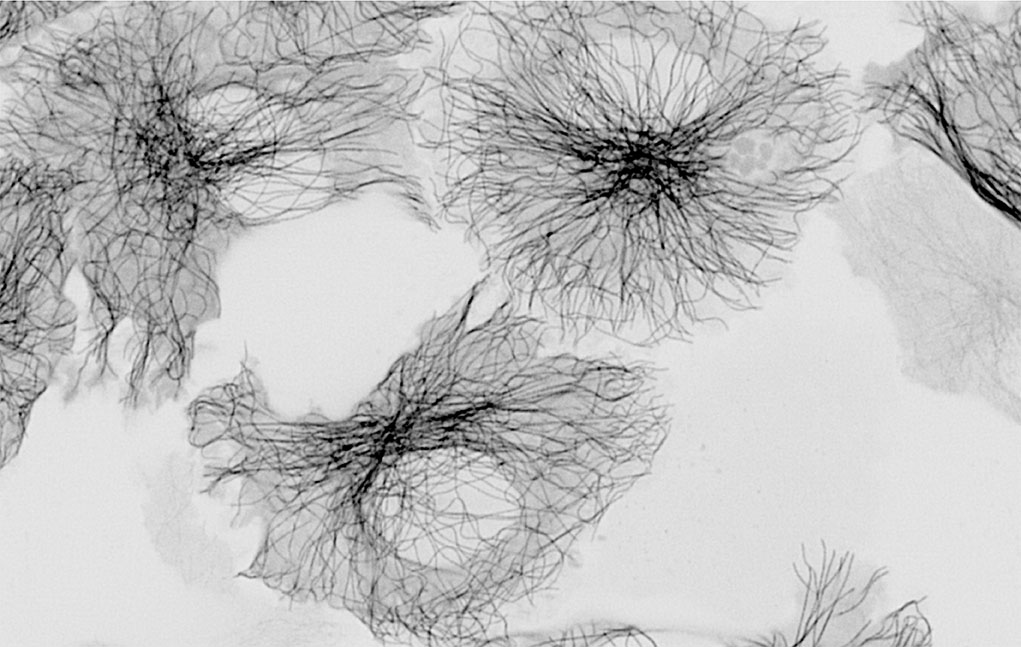Stehbens Group
Cytoskeleton and cell motility
Cells in living organisms navigate highly crowded three-dimensional environments, where their coordinated migration provides the driving force behind developmental and homeostatic tissue maintenance.
Cells moving in 3D environments constantly experience fluctuating bio-physical forces which they convert into bio-chemical signals in a process termed ‘mechano-sensing’, allowing cells to alter their shape to fit the physical attributes of the microenvironment.
Cells frequently need to navigate through tight or confined spaces such as pores in between matrix fibres. Our understanding of the molecular and mechanical principles of how cells
- Detect these physical limits,
- Deform their cortex whilst producing mechanical force for forward locomotion and
- Orient themselves to move through tissues, remains elusive.
Our research aims to understand the fundamental principles underpinning how cells integrate chemical and physical signals from their local microenvironment to facilitate cell movement and survival. We apply these findings to understand how cancer cells exploit this to metastasise or spread to distal tissues and how the local microenvironment promotes tumour cell survival. We hypothesise that targeting the crosstalk between the cytoskeleton and the mechanical micro-environment, can be developed as an anti-metastatic approach.

Research Areas
- Cytoskeleton
- Cell migration and invasion
- Cell mechanics
- Cell adhesion
- Live-cell microscopy
- Cancer cell biology
Research Approach
Our team focuses on - at the molecular level - how the microtubule cytoskeleton and microtubule associated proteins called +TIPs, regulate how cells move through physically challenging environments. To do this we utilize cutting-edge methodology including microchannel fabrication, novel light sheet microscopy, quantitative imaging methods in combination with patient-derived cell and 3D hydrogel models to recapitulate the 3D microenvironment.
Research Highlights
Funding
Since 2019
- Discovering therapeutic vulnerabilities of circulating melanoma clusters
(2024–2027) United States Congressionally Directed Medical Research Programs - Melanoma Research Program - Integrating innovative models of the brain microenvironment to identify new treatment strategies for medulloblastoma
(2023–2024) The Cure Starts Now Foundation - Integrating innovative models of the brain microenvironment to identify new treatment strategies for medulloblastoma
(2022–2026) The Cure Starts Now Australia - Microenvironmental regulation of melanoma brain metastasis
(2022–2025) United States Congressionally Directed Medical Research Programs - Melanoma Research Program - Integrating innovative models of the brain microenvironment to identify new treatment strategies for medulloblastoma
(2020–2024) Brainchild Foundation - Regulation of 3D Cell Migration by Microtubule-Dependent Processes
(2020–2023) ARC Future Fellowships - How does melanoma sense the tumour environment?
(2019) UQ Early Career Researcher - Improving outcomes for patients with melanoma brain metastases using novel personalised and response-adapted treatment strategies (PARF Translation Research Innovation Award administered by MSHHS)
(2018–2022) Metro South Hospital and Health Service - How do microtubules control melanoma invasion?
(2018–2020) RL Cooper Medical Research Foundation Limited
Publications
Click here to view Stehbens group publications







